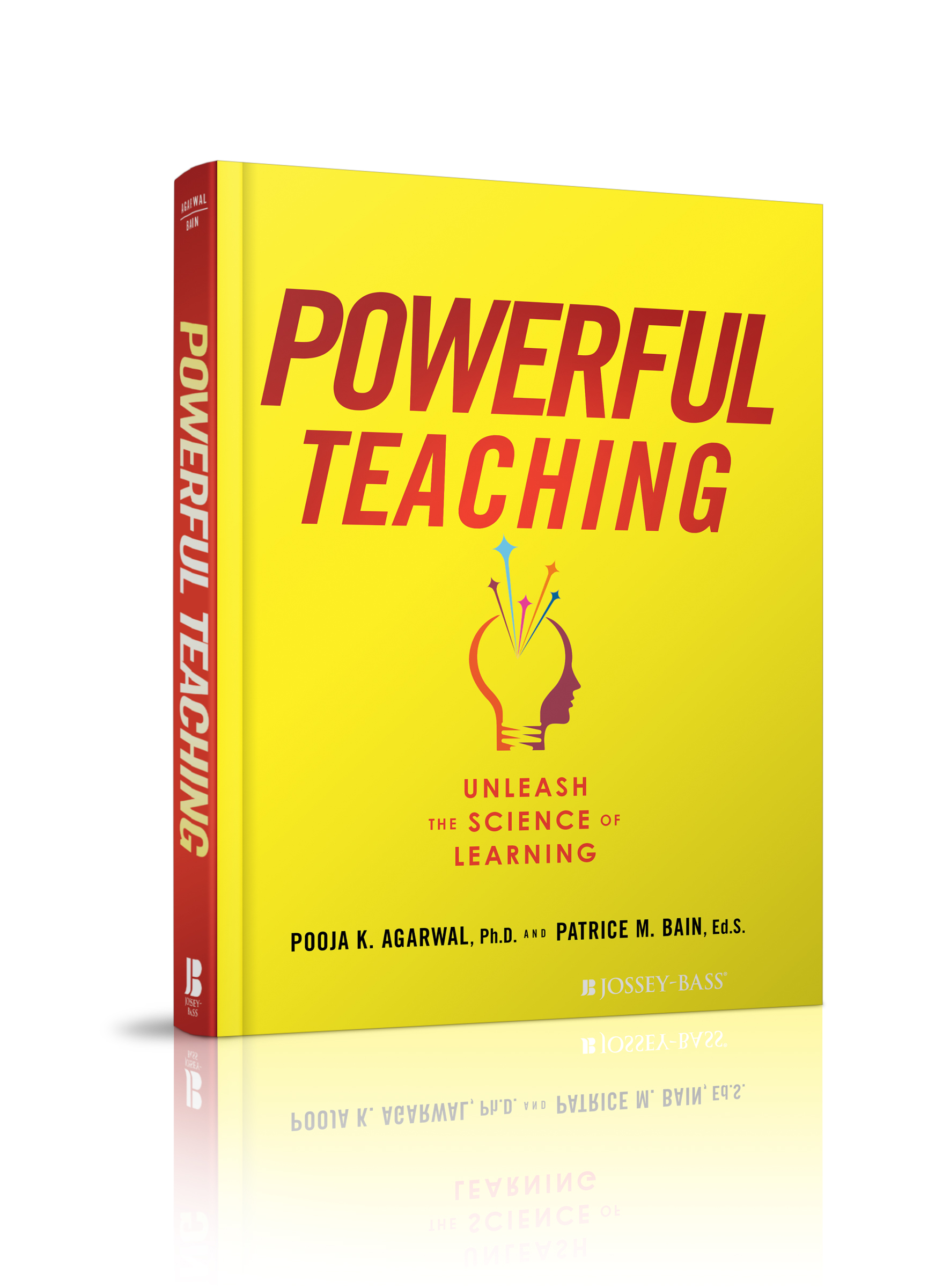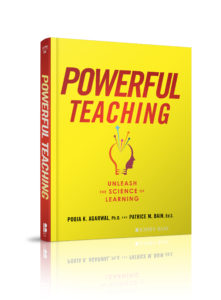
Let’s describe a perfect book for a Learning and the Brain conference goer:
First: it should begin with solid science. Teachers don’t want advice based on hunches or upbeat guesswork. We’d like real research.
Second: it should include lots of classroom specifics. While research advice can offer us general guidance, we’d like some suggestions on adapting it to our classroom particulars.
Third: it should welcome teachers as equal players in this field. While lots of people tell teachers to “do what research tells us to do” – that is, to stop trusting our instincts – we’d like a book that values us for our experience. And, yes, for our instincts.
And, while I’m making this list of hopes for an impossibly perfect book, I’ll add one more.
Fourth: it should be conspicuously well-written. We’d like a lively writing voice: one that gets the science right, but sounds more like a conversation than a lecture.
Clearly, such a book can’t exist.
Except that it does. And: you can get it soon.
Memory researcher Pooja Agarwal and teacher Patrice Bain have written Powerful Teaching: Unleash the Science of Learning. Let’s see how their book stacks up against our (impossible) criteria:
First: Begins with Research
If you attend Learning and the Brain conferences, you prioritize brain research.
We’re not here for the fads. We’re here for the best ideas that can be supported by psychology and neuroscience.
Happily, Powerful Teaching draws its classroom guidance from extensive research.
Citing dozens of studies done over multiple decades, Agarwal and Bain champion four teaching strategies: retrieval practice, spacing, interleaving, and metacognition.
(As frequent blog readers, you’ve read lots about these topics.)
Agarwal herself did much of the research cited here. In fact, (researcher) Agarwal did much of the on-the-ground research in (teacher) Bain’s classrooms.
And Agarwal studied and worked with many of the best-know memory researchers in the field: “Roddy” Roediger, Mark McDaniel, and Kathleen McDermott, among others.
(BTW: McDaniel will be speaking at the LatB conference this fall in Boston.)
In short: if you read a recommendation in Powerful Teaching, you can be confident that LOTS of quality research supports that conclusion.
Second: Offers Classroom Specifics
Powerful Teaching is written by two teachers. Bain taught 6-8 grade for decades. And Agarwal is currently a psychology professor.
For this reason, their book BOTH offers research-based teaching advice AND gives dozens of specific classroom examples.
What does retrieval practice look like in the classroom? No worries: they’ve got you covered.
This strength merits particular attention, because it helps solve a common problem in our field.
Teachers often hear researchers say, “I studied this technique, and got a good result.” We infer that we should try that same technique.
But, most research takes place in college classrooms. And, the technique that works with that age group just might not work with our students.
How should we translate these research principles to our classrooms? Over and over again — with specific, practical, and imaginative examples — Bain and Agarwal show us how.
Third: Welcomes Teachers
Increasingly in recent months, I’ve seen scholars argue that teacherly instincts should not be trusted. We should just do what research tells us to do.
As I’ve written elsewhere, I think this argument does lots of damage—because we HAVE to use our instincts.
How exactly do research-based principles of instruction work in thousands of different classrooms? Teachers have to adapt those principles, and we’ll need our experience —and our instincts—to do so.
Powerful Teaching makes exactly this point. As Bain and Agarwal write:
You can use Power Tools your way, in your classroom. From preschool through medical school, and biology to sign language, these strategies increase learning for diverse students, grade levels, and subject areas. There are multiple ways to use these strategies to boost students’ learning, making them flexible in your classroom, not just any classroom.
Or, more succinctly:
The better you understand the research behind the strategies, the more effectively you can adapt them in your classroom – and you know your classroom best.
By including so many teachers’ experiences and suggestions, Agarwal and Bain put teacherly insight at the center of their thinking. They don’t need to argue that teachers should have a role; they simply show us that it’s true.
Fourth: Lively Voice
Scientific research offers teachers lots of splendid guidance … but if you’ve tried to read the research, you know it can be dry. Parched, even.
Happily, both Bain and Agarwal have lively writing voices. Powerful Teaching doesn’t feel like a dry lecture, but a friendly conversation.
For example:
Learning is complex and messy, it’s not something we can touch, and it’s really hard to define. You might even say that the learning process looks more like a blob than a flowchart.
Having tried to draw many learning flowcharts, only to end up with blobs, I appreciate this honest and accurate advice.
What’s Not to Love?
As a reviewer, I really should offer at least some criticism of Power Tools. Alas, I really don’t have much – at least not much substantive.
Once or twice, I thought that the research behind a particular finding is more muddled that PT lets on. For example, as I’ve written about before, we’ve got contradictory evidence about the benefits of retrieval practice for unstudied material.
But, as noted above, Agarwal is an important researcher in this field, and so I’m inclined to trust her judgment.
Mostly, I think you should put Powerful Teaching at the top of your summer reading list. You might sign up for the summer book club. Keep on eye on the website for updates.





